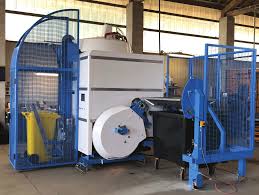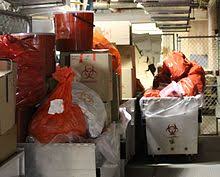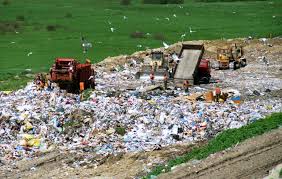Other Methods/Technologies for Biomedical Waste Treatment
We have previously described most conventional methods/technologies for biomedical waste treatment available to all especially in the third world or developing economies.
We shall use this section to describe the emerging waste treatment technologies which are equally sound and with varying benefits.
These technologies includes but not limited to: pyrolysis/gasification, pulverization, biogas digester etc. We shall describe each technology in turn.
1. Pyrolysis and Gasification
Pyrolysis and gasification are quite new methods for treatments of municipal Biomedical waste and remain relatively unproven in African usage compared with classical methods.
Despite the fact that these technologies are widely used and well established as industrial processes for energy recovery from hydrocarbons feedstock, their use as process for dealing with mixed municipal waste streams is at an early stage of development.
Both pyrolysis and gasification turn wastes into energy rich fuels by heating the waste under controlled conditions. In contrast to incineration, which fully converts the input waste into energy and ash, these processes deliberately limit the conversion so that combustion does not take place directly.
Instead, they convert the waste into valuable intermediates that can be further processed for materials recycling or energy recovery e.g. a mixture of carbon monoxide and hydrogen, oils and char.
Read Also: Traditional/Crude Biomedical Waste Disposal Process
Pyrolysis is a thermal decomposition of fuel in the absence of air. Solid waste is converted to a gas and/or liquid, which is then converted to electricity by combustion in a gas turbine or diesel engine. Some solid residue generally remains. Heat has to be provided to the fuel for decomposition to occur and this is normally integrated into the overall process scheme.
One advantage of the pyrolysis technique is that some liquid fuel can be produced, which is versatile, easily transportable and could be used, for example, as a transport fuel in an international combustion engine.
Because much of the fuel produced in the pyrolysis process is consumed within the operation, pyrolysis tends not to be an efficient conversion technology.
Gasification is a reaction between the fuel and oxidant (steam and oxygen) carried out in a restricted supply of oxygen so that complete combustion of the fuel does not take place. Instead the volatile gas comprising combustible components, such as hydrogen, carbon monoxide, methane and higher hydrocarbons is produced, which is subsequently burned to generate electricity, normally in a gas turbine.
Gasification reactions include partial oxidation of the fuel and the water gas reaction and so are generally auto-thermic, not requiring heat to be supplied from elsewhere in the process. Therefore, thermo-chemical conversion of the fuel to electricity effectively takes place in two stages.
The advantage of this is that pollutants can be removed from the small fuel gas stream. Also, the second stage is often in a gas turbine or diesel engine. Consequently a higher overall plant efficiency can be achieved through the use of combined cycles with the potential for further increase as gas turbine firing temperatures are increased.
Gasification is an energy efficient technique for minimizing the solid waste volume and for recovering energy. It generates 500-600 kWh useable energy per ton of waste. This technology has been used more widely than pyrolysis because it doesn‘t have problems with heat transfer and is a more efficient process that produces a single gaseous product.
2. Pulverization/ Shredding
Although dictionaries differentiate between shredding and pulverizing, the expressions are often used interchangeably when applied to the processing of solid waste. This discussion of the processing of solid waste for size reduction and uniformity will adopt the accepted interchangeable use of shredding and pulverizing.
However, it is noted that the end product of the process does differentiate between the shredded or cut and torn shape, and the pulverized or crushed and ground fine particle.
There are four types of shredders used for the shredding or pulverizing of solid waste: hammer mills, drum pulverizes, crushers, and wet pulverizes. Each type of equipment has a variety of designs, advantages, and disadvantages.
Major considerations in selecting a shredder are its capacity, speed, power requirements, maintenance needs, ability to produce the end product desired and, most important, and reliability.
These characteristics will differ significantly for various types of solid waste and differing end products. In choosing a type and particular design of a shredder, it is desirable to obtain information on the performance of the shredder in circumstances similar to those for which the machine is to be used.
Solid waste is shredded for several reasons, including volume reduction. Under certain circumstances, shredded refuse can be disposed of in a landfill without requiring as stringent compaction and cover procedures as would be applied to unprocessed refuse.
If solid waste is to be converted to refuse derived fuel (RDF), shredding and/or pulverizing is an element of the RDF production process.
Resource recovery plants that separate waste into recyclables often include one or more shredding operations to improve the mechanical separation characteristics of the waste. If solid waste is to be transported mechanically, pneumatically, or hydraulically, shredding is a desirable if not essential first step before transport. It is obvious that shredding and pulverizing of solid waste is a process with many uses.
3. Biogas Technology
When biodegradable organic solid waste is subjected to anaerobic decomposition, a gaseous mixture of Methane (CH4) and Carbon dioxide (C02) known as Biogas could be produced under favorable conditions.
The decomposition of the waste materials is mainly done by the fermentation process which is carried out by different group of microorganisms like bacteria, fungus, actinomycetes etc. The group of micro-organisms involved for biogas generation is mainly the bacteria.

The process involves a series of reactions by several kinds of anaerobic bacteria feeding on the raw organic matter. ―In anaerobic conditions, anaerobic bacteria disintegrate the biodegradable solids by a biochemical process shown below.
Digestion Process
The anaerobic digestion of the organic waste matter occurs in three different stages:
- Hydrolysis
- Acidogenesis
- Methanogenesis.
- Hydrolysis
Most of the organic waste materials subjected to bio-methanation contain the macromolecules like cellulose, hemicellulose, lignin etc. which are insoluble in water. In the first step of digestion, these macromolecules are subjected to breakdown into micro-molecules with the help of some enzymes which are secreted by the bacteria.
Read Also: Waste Composting (Manure Pit) and Advantages of Composting
In the initial step, oxygen in the feed materials is used up by oxygen loving bacteria and large amounts of carbon dioxide (CO2) are released and the major end product of this step is glucose.
4. Acid Formation
The components released during the hydrolytic breakdown become the substrate for the acid forming bacteria. The acid forming bacteria convert the water soluble substances into volatile acids. The major component of the volatile acid is acetic acid.
Besides this, some other acids like butric acid, propionic acid and gases like CO2 and H2 are also produced. The acid forming bacteria during the conversion process utilise the amount of oxygen remaining in the medium and make the environment anaerobic.
5. Methane Formation
This is the last stage of the biogas generation. In this stage, the methanogenic bacteria convert the volatile acids formed in the second step by the acidogenic bacteria to methane and carbon di-oxide. Some excess CO2 in the medium is also converted to methane gas by reacting with the hydrogen present in the environment.
The End Products of Bio-Gas Technology are:
Biogas:It is a marsh gas, a mixture of Methane (55- 65%),
Carbon di—oxide (35- 45%), trace amount of Hydrogen,Hydrogen Sulphide and Ammonia. It is a combustible gas and can be used for heating, lighting, powering irrigation pump, generating electric power and for local use for cooking purpose.
The gas is smokeless, environment friendly and efficient fuel.
Left over slurry: Environmental friendly manure would be produced which can be used as organic fertilizer for gardening and agricultural purpose. It can be used to enrich the soil. It can also be dovetailed to vermin composting to enrich manure value of compost.
6. Fuel Efficiency of Biogas
The fuel efficiency of cattle dung is 11% and that of Biogas from same dung is 60%, Biogas technology holds promise of revolutionizing energy scene- conserving forests, preventing soil erosion and providing energy security in rural areas.
Normally a 3 cubic meter capacity Biogas plant is considered sufficient to meet the heating and lighting needs of a rural family of 6 to 9 persons.
7. Biogas Plant Construction
Currently in Nigeria for instance, the Environmental Health Officers Registration Council of Nigeria is championing the course of widening the horizon of knowledge of the public that the biogas plant can be constructed a hundred percent using local materials. Two types of the plant are being advocated by EHORECON for domestic biogas plant – the flexible type and the dome type.
The flexible type is made of rectangular sewn air tight tarpaulins material with provisions for charging the plant and removal of the gas and spent slurry respectively. A flexible tank of 2.5 cubic meters submerged about one (1) meter on the surface of the ground will be sufficient for a family of 4 – 10 persons.
Use of Biogas Technology for Biomedical Waste Management
The biogas technology can be used for management of biodegradable biomedical waste (portion) generated from:
- Household
- Community
- Commercial Establishment.
1. Household Level
Kitchen waste, cattle dung, garden waste, leaves of trees can be digested and digested product reused at household level.
2. Community Level
Community biodegradable waste such as cattle dung of stray cattle and from abattoirs, garden waste, leaves of roadside trees, human excreta from individual/community toilet etc., can be digested in community biogas plant and end products can be reused.
3. Commercial Establishment
Commercial biodegradable waste generated from hotels, parks and gardens, and leaves of roadside trees etc. can be digested in commercial biogas plant and the end products can be fruitfully utilized commercially such as gas engine, liquefied natural gas productions, lifting water for irrigation purposes etc.
Read Also: Traditional/Crude Biomedical Waste Disposal Process
The gas production varies from 0.29 cubic metres per kg of volatile solids added per day to 0.19 cubic metre 0.16 cubic metres per kg added per day in different seasons. The volatile solids destruction ranges from 40 to 55%. The sludge has good manorial value of Nitrogen, FE phosphorous, and potassium (NPK ratio is 1.6: 0.85: 0.93). The process gives a good performance at a retention time of 30 to 55 days varies as per season.



